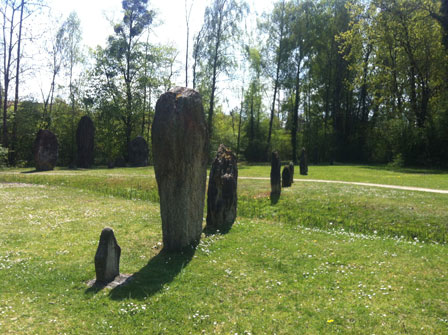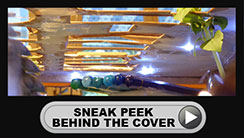Guest Blogs
Knowitall.ch often invites local experts in their field to contribute to their own blogs on our site. This means not only you will benefit from the useful recommendations that we make on our News pages, but you can also profit from some of the great advice and tips that these experts have to make on their favorite subjects. Whilst each of these bloggers has been recommended to us at some point during the evolution of Know-it-all passport and knowitall.ch, obviously we are not able to test out all the suggestions they make on their blogs, nor do we necessarily agree with all their opinions. So if you do find one of their tips useful (or not!), do let us know!
To make these blogs more accessible to you, we have now decided to group them altogether in one section, entitled Guest Blogs, accessible from our main menu bar. We will also post the most recent blogs on the home page of our site in the right hand column.
We are still building up this area of the site, and are looking for bloggers in a number of sections, including Your Home, Travel, and Leisure, so if you feel you have a useful contribution to make in either of these areas, and have the time to submit blog entries approximately every month, then please get in touch!

By Lisa Gibson, http://misswissbliss.wordpress.com/
Did you know that Switzerland has its very own version of Stonehenge situated in Yverdon-les-Bains? Located on the shores of Lake Neuchâtel, in a clearing in the Champ-Pittet nature reserve, is a formation of 45 stones of Neolithic origin, known as the Menhirs de Clendy. (Menhir is the term used for an upright monumental stone of prehistoric origin.)
The level of Lac de Neuchâtel was artificially lowered at the end of the nineteenth century and this led to the discovery of several archaeological finds, most notably, the Stone Age site of Clendy.
Between 1869 and 1883, the level of the lake decreased by 2.7 m following the first correction of the Jura waters. It was in 1878 that these menhirs first appeared on the waters surface. An engineer confirmed that the giant stones had been placed there by a Neolithic people over 6 000 years ago. This was later backed up in 1975 by a scientist who confirmed that the menhirs had in fact, been strategically aligned in an oval formation which permitted “a view from East to West, from rivers to mountains and from the stars to the moon”. At that time, the site was clear of any trees, so the uninterrupted views must have been quite something to behold.

By Tara Lissner, Swiss Gardening School
You have to love September for the still warm sun shining in the hazy blue sky of early autumn providing the most perfect soft light for admiring the changing colours of plants. The sound of gardeners out with their hedge trimmers and the sight of birds devouring the tiny but pesky caterpillars on our roses – such an end of summer feeling. May we be so lucky in October.
Timely Tips
If ever you thought the autumn was a time to relax before the snow fall of winter, be prepared for a long list of things to do this month. The question is where to start: give the lawn a little tlc (scarify, aerate, top dress and reseed until the first frost); remove all the summer bedding (difficult to do when the flowers keep coming but very unpleasant once the rain starts and they begin to rot!), plant new perennials, think about planting a fruit tree; give the hedges their final trim; plant bulbs in borders, lawns, pots and containers (available everywhere now and already on sale in some places), finally clear the vegetable plot and consider planting a green manure. As I said it is a very busy time.

By Hiba Giacoletto, Healthwise
This is a healthier version of gnocchi than the traditional white potatoes, white flour and eggs that are make up this Italian alternative to pasta. Instead of normal potatoes, I used sweet potatoes - a completely different vegetable despite the name which is significantly higher in vitamin C and vitamin A. Vitamin A is key for eye health and the immune system and just 1 medium-sized sweet potato covers more than 200% of your daily needs in vitamin A and 50% of your daily needs of vitamin C. (source). I have also used a gluten-free, whole grain flour which is a much better option than nutrient-void white flour.
Start by cooking 2 medium sweet potatoes.

Séverine Jourdain is the Head of Coaching at Nestlé Group. However, she has had many lives prior to Nestlé and perhaps it is her diverse background that has made her what she is today; authentic, passionate, non-judgmental and driven with a capital D! Séverine perceives coaching at Nestlé as a Business performance accelerator as well as an opportunity for individuals to progress and flourish. Indeed, Nestlé has been gradually building the awareness around coaching since many years through their “Every Day Coaching” program and more recently through the implementation of a structured global coaching network. Séverine unquestionably embodies this drive by Nestlé and in doing so she is having the time of her life!
I talked to her at the picturesque town of Vevey home to Nestlé HQ. I sincerely hope you enjoy the interview as much as I did!
Sunita

By Sabine Hutcheson, Education Consultant at TutorsPlus
Earlier this year the Economist Intelligence Unit compiled a report for Pearson which showed the UK coming into the top 10 education systems in the world. This is a much better score than last year’s PISA report which can be partly explained by the fact that Pearson looked at the rate of students continuing into higher education; a mere detail perhaps but a significant one. This poses the question of an education system’s raison d’être. If we explore this issue, the English curriculum, on offer in many private schools in the Switzerland, certainly ticks all the boxes.
The English curriculum does not grade students in the same way they are graded in Swiss or French schools. It is based on a set of competences that each individual child acquires throughout their education. These translate into levels. At the end of primary school some children may have ideally reached a level 5, while others are at level 3. The levels pertain to a child’s acquired skills in literacy and numeracy. Because students are rated against their own progress and achievements, as opposed to a benchmark or their peers, they move on unhindered until the age of 14. At this point, they will be guided to a choice of qualifications suitable for their academic level and/or vocational aspirations, most of which can lead to university.








